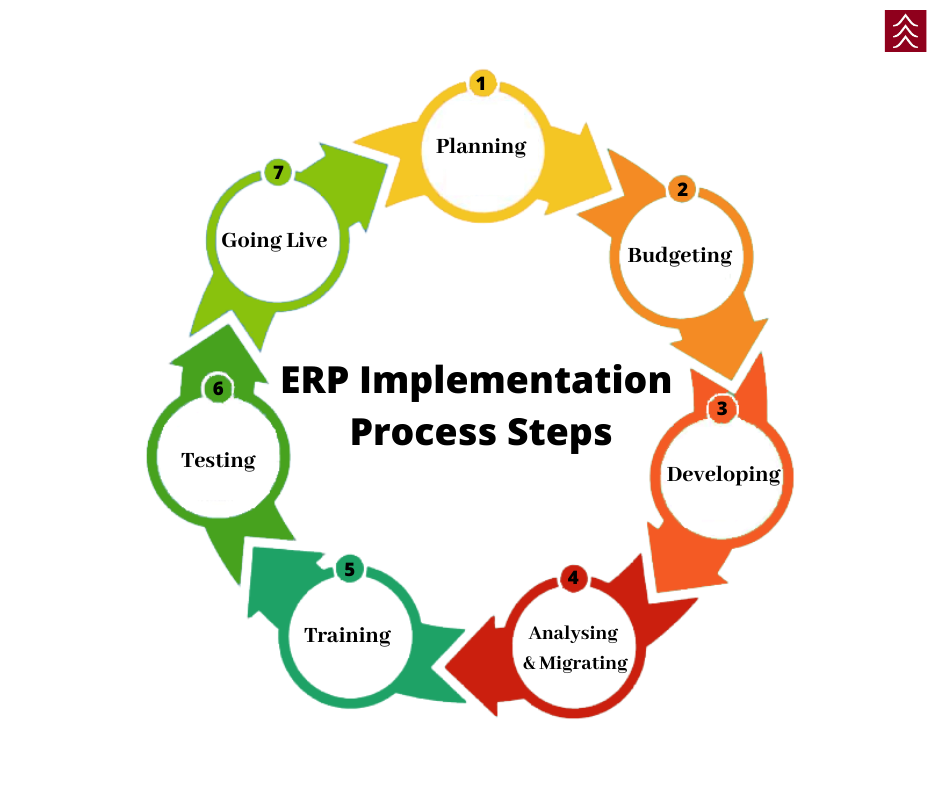SAP ERP and the migration to S4 HANA: Why are some companies using SAP reluctant?
In 2019 SAP introduced S/4 HANA. This solution is written natively for the SAP HANA database: a proprietary, in-memory, column-oriented, relational database management system developed and marketed by SAP. The new solution is characterized by simplifications, increased efficiency, and compelling features such as planning and simulation options in many conventional transactions.
Originally, SAP announced that mainstream maintenance for SAP ERP would end in 2025. This deadline was extended to 2027. Companies wanting to continue using SAP ERP throughout 2030 would have to pay a premium (22% to 32% on support) from 2027 through 2030. The 2027 deadline is viewed by many SAP customers as a guillotine by when they must retire their existing solutions.
How many SAP customers have already migrated to S/4 HANA? According to a 2020 study carried out by the DSAG (Deutsche SAP Anwender-Gruppe) the following numbers for the SAP ERP customers apply:
I personally doubt that 19% have already successfully migrated to S/4 HANA due to three reasons:
Other SAP ERP customers are not so sure and see the sundown of SAP ERP as an opportunity to review their application strategy and make qualified decisions for the long-term application future. 2BCS AG has supported many SAP ERP customers in the last three years. Before starting an independent roadmap, we carry out an analysis of the initial situation. We have identified the following six common issues that our SAP ERP customers face:
Originally, SAP announced that mainstream maintenance for SAP ERP would end in 2025. This deadline was extended to 2027. Companies wanting to continue using SAP ERP throughout 2030 would have to pay a premium (22% to 32% on support) from 2027 through 2030. The 2027 deadline is viewed by many SAP customers as a guillotine by when they must retire their existing solutions.
How many SAP customers have already migrated to S/4 HANA? According to a 2020 study carried out by the DSAG (Deutsche SAP Anwender-Gruppe) the following numbers for the SAP ERP customers apply:
| Percentage of customers | Situation |
| 10% | have migrated to S/4 HANA before 2020 |
| 9% | plan to migrate to S/4 HANA in 2020 |
| 40% | plan to migrate to S/4 HANA in 2021, 2022 and 2023 |
| 22% | could image a migration between 2024 and 2027 |
| 13% | have not decided on their strategy yet |
| 6% | plan to stay on SAP ERP after 2027 |
I personally doubt that 19% have already successfully migrated to S/4 HANA due to three reasons:
- The Corona pandemic in 2019 and 2020: Numerous companies have put their existing S/4 HANA migration projects on hold.
- The pandemic has led SAP ERP companies to postpone their migration decisions.
- The real external and internal costs of the initial migrations to S/4 HANA is much higher than expected (e.g. see published cases from Lidl, Haribo, V-Zug). This has made some SAP ERP customers reluctant about pressing the button.
Initial Situation
Not all SAP ERP customers will ask 2BCS AG for advice on issues concerning their migration to S/4 HANA. There are SAP ERP customers that are satisfied with the application and the value generated by it, with their system integrator, with the internal and external costs that the solution creates and the level of flexibility and innovation that is given. These SAP ERP customers will choose the Greenfield or the Brownfield approach and join the S/4 HANA bandwagon.Other SAP ERP customers are not so sure and see the sundown of SAP ERP as an opportunity to review their application strategy and make qualified decisions for the long-term application future. 2BCS AG has supported many SAP ERP customers in the last three years. Before starting an independent roadmap, we carry out an analysis of the initial situation. We have identified the following six common issues that our SAP ERP customers face:
-
The SAP ERP application is highly customized
The existing application has been in use for many years. The solution has been highly customized to support the business processes and the specific customer needs. The list of “Z-Programs” is long and very often there is not much know-how and documentation available on these customizations. Constantly keeping these customizations up to date when installing new versions or patches is very tedious. There is a constant worry that these customizations interfere with standard functionality.
→ Concern 1: Are these customizations still needed by business or can the customer move back to a non-customized solution? -
The business model and/or the business processes have changed since the initial implementation
The SAP ERP solution was introduced based on the model and processes at that time. In the meantime, business has changed. Changing SAP ERP isn’t that easy and very often the IT projects are not as fast and successful as business expects.
→ Concern 2: How well is the customer’s existing SAP ERP aligned to the current and future business model and processes? -
The support from the system integrator does not fulfil the expectations
The relationship to the system integrator has deteriorated over the years. Instead of being the “most important” customer, our customers have become “priority 2” customers who get attention when there is not enough “new business”. Very often know-how on the customer specific solution is not available anymore.
→ Concern 3: Can the customers expect better support and best practice from the system integrator in the future? -
SAP ERP does not create enough business value
Customers running SAP ERP often complain that the Total Cost of Ownership is too high compared to the value given by the system. The system does not give a competitive advantage anymore. Our customers complain that their competitors have caught up and often use less expensive, easier and more flexible systems.
→ Concern 4: How can the future ERP solution be a competitive advantage? -
SAP ERP does not support innovation and flexibility
For many of our customers the core processes (order processing, purchasing, manufacturing, finance) have basically stayed the same over the last years. The changes are elsewhere. The name of the game is “innovation around the edges”. Our customers are implementing CRM solutions, web-solutions, B2B portals, configurators, BI and MES solutions. All of these innovations are on the edges of SAP ERP. Very often SAP ERP does not have an adequate module to fulfill the customer needs. This has led to a complex, heterogeneous application with many interfaces and challenges concerning master data.
→ Concern 5: These innovations at the edges are now business standard, but not integrated in the SAP ERP solution. How can the customers reduce complexity but still stay innovative? -
The costs of running SAP are too high
Customers running SAP ERP complain that all costs related to SAP are too high. The maintenance is expensive, the hosting, the application management, the daily rates of the consultants and the number of days needed for simple tasks are too high. In addition, the new pricing models (e.g., indirect usage) and how they will affect the customers, lead to insecurity.
→ Concern 6: How can IT reduce its ERP operating costs?
Who is 2BCS?
2BCS AG is a Swiss leader in business and IT transformation. We support our clients’ digital initiatives by providing thought leadership, independent expertise and hands-on implementation support based on dozens of years of experience. Our clients are national and international industrial and trading companies who demand and expect best practice professional support. 2BCS AG is a spin-off of HSG and is based in St. Gallen and Zurich.Contact us


